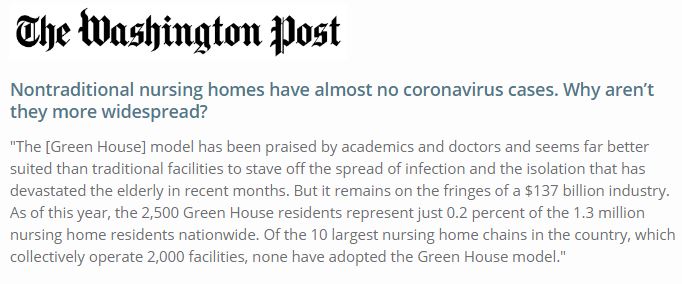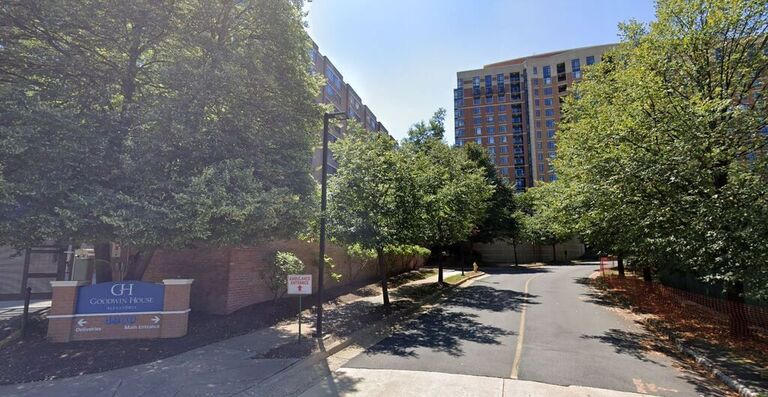A New Nursing Home Model? Lower Resident Numbers and Better Care Lead to a Better Nursing Home Experience.
As the number of older folks reaching retirement age continues to climb, nursing homes across the country are racing to expand, hoping to offer a bed to these aging individuals. What many do not perceive is the additional goal to acquire the Medicare and Medicaid money that comes with every older American that is placed in a long term care facility. As the rise of for-profit nursing homes continues unabated, some small facilities stand out among the crowd for providing exceptional resident care. These outliers are non-traditional nursing homes and they focus on quality of life, rather than profits.
Our nursing home abuse attorneys routinely see the worst kinds of nursing home neglect injuries. Most frequently, we see these neglect-related injuries arise in our nation’s large, for-profit nursing home chains. However, a fresh new look on nursing home care may be changing the game in long term care living.
Smaller, More Personalized Nursing Homes Lead the Pack in Quality of Life
Goodwin House in northern Virginia is one such location, as is Woodlands at John Knox Village in Fort Lauderdale, Florida. These “non-traditional” nursing homes take the form of small, residential facilities where each resident lives in a cozy apartment or private room. Staff are compensated above the national average, meaning they don’t need to work 60 hours per week or take an additional job to make ends meet. The result? Significantly improved health outcomes and a much higher quality of life than the majority of nursing homes across America can achieve.
The best-known non-traditional nursing home model, Green House homes, has proven that the system works: residents are just one-fifth as likely to contract contagious diseases than those living in typical nursing homes. They are also less likely to form bed sores or suffer from a catastrophic fall. If they do happen to come down with something, residents in non-traditional facilities are just one-twentieth as likely to die from the resulting sickness.
This positive health impact is undeniable. And yet, as of 2020, Green House residents account for just 0.2% of all older folks living in assistive facilities across the United States. As a reminder, there are almost 1.5 million nursing home residents in the country; Green House accounts for just 2,500.
The Standard Nursing Home Model: “A Head in Every Bed” and Skeleton Staff Numbers
None of the 10 largest nursing home chains in the States have adopted the practices that make Green House stand out. Their reasoning typically lies somewhere in an alleged inability to revamp the reimbursement system currently in place for Medicare and Medicaid payments or how much top executives are paid. Goodwin House, Woodlands at John Knox Village, and a handful of others beg to differ.
Unfortunately, the Green House project still has a difficult path ahead if it intends to become the mainstream option. Non-traditional nursing homes are primarily situated in affluent areas, where they are owned by non-profit organizations that do not rely on Medicaid payouts. This puts them out of reach—not only monetarily but geographically—of many low-income residents, primarily in Black and Latino neighborhoods. This kind of care should be available for all seniors, not just those who are economically fortunate.
Lower Staff Turnover in Non-Traditional Long Term Care Facilities
In any industry or business, staff retention is key to providing good care or service. Staff turnover is a trackable metric which shows what kind of service a business provides. The nursing home industry is no different.
In the Green House facilities, less than eight percent of all staff choose to leave their job each year. Compare this with the industry-wide standard of more than 50 percent, likely due to chronic overwork and underpay problems.
Before and After Snapshots of Resident Care in Tradition vs. Non-Traditional Nursing Homes
Studies also show that former Green House facilities slip back into bad behavior and poor treatment once the Green House techniques are abandoned in favor of reverting to the more profitable and simpler standard nursing home administration. In one demonstrated instance of Baltimore nursing home neglect, one facility declined to renew the Green House standards; in the years following, the location was fined multiple times for infection-related deficiencies.
This is a far cry from the high quality of life experienced by the non-traditional folks. “I’ve certainly felt safe here,” one resident of a Green House facility said, “especially when I read in the paper what has happened in other nursing homes.” This is the standard that the entire industry should be striving to achieve so that horrific injuries like bedsores are a thing of the past; unfortunately, as Barry and Debby Barkan from the Live Oak Institute have noted, “No piecemeal approach has ever worked. The whole system has got to change.”
Non-Traditional Nursing Homes like Green House Provide Better Care

Until more nursing homes adopt a new and improved model, abuse and neglect is unfortunately bound to happen in these long term care facilities. To learn more about revolutionary non-traditional long term care facilities, visit The Green House Project’s website.
If you or a loved one suffered from nursing home abuse or neglect inside a long term care facility, call or chat with one of our experienced and compassionate attorneys today. Call us toll free at 888-375-9998 or fill out the form below.



